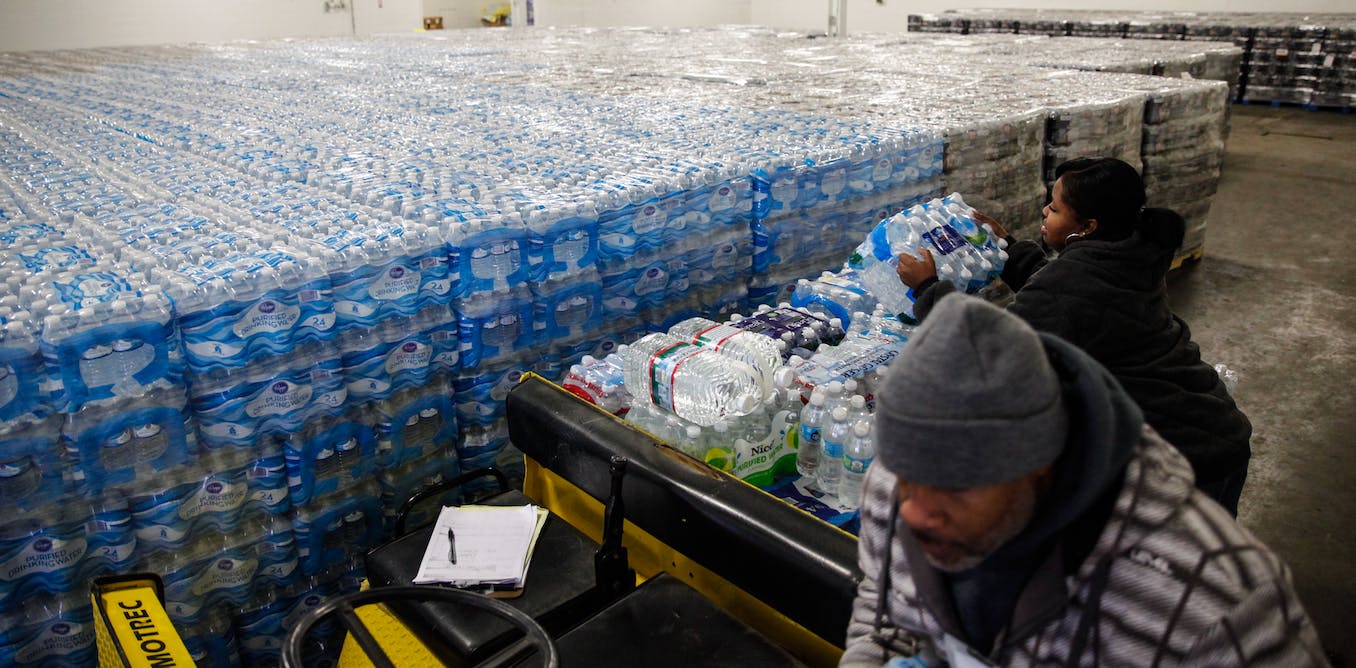

An emergency bottled-water distribution site in Flint, Mich., in early 2016. Sarah Rice/Getty Images
A massive intrusion of salt water into the Mississippi River has left the tap water in several Louisiana communities unsafe to drink and could threaten the New Orleans metropolitan area. The most visible emergency response is the provision of bottled water, with authorities distributing huge quantities of single-serving plastic water bottles to residents.
These pallets of water are an increasingly familiar sight in the U.S. They have become the default response not only to natural disasters but to a series of human-made emergencies – from the crises of unsafe tap water in Flint, Michigan, and Jackson, Mississippi, to contaminated groundwater in towns in California’s Central Valley. What these places also have in common is that their residents are disproportionately low-income and nonwhite.
In such communities, public officials and charitable donors often present bottled water as a stopgap solution, to be used only until the immediate crisis is resolved. But in practice, bottled water often becomes a long-term substitute for compromised tap-water supplies.
As a sociologist, I study the social and environmental effects of the rapid growth of bottled-water consumption in the U.S. and beyond, and how it is linked to distrust of public tap water. In my new book, “Unbottled,” one chapter examines how these dynamics played out in Flint. As its example shows, communities can end up relying on bottled water – often at great expense – for years after a crisis.
In Flint, after the toxic lead and bacterial contamination of the city’s water system was revealed in 2015, residents demanded – and received – access to free bottled water as an emergency measure. Over the next seven years, they wound up consuming hundreds of millions of bottles.
While local activists and Michigan’s governor sought a federal disaster declaration that would have facilitated bulk tanker deliveries of safe water, that request was denied, and bottled water remained the sole alternative water source on offer until free distribution ended in December 2022.
Although most lead service lines in Flint have been replaced and officials claim the water is safe to drink, damaged pipes and appliances remain in some homes. Many residents continue to distrust their tap water, and many of them rely on purchased bottled water for their drinking, cooking and other needs.
They are not alone. Studies and opinion polls show that low-income, Black and Latino households […]
Full article: theconversation.com
Clean water is essential for life, yet millions of Americans unknowingly consume contaminants through their…
Human brains contain higher concentrations of microplastics than other organs, according to a new study, and the…
From the Office of the Governor: In anticipation of a multi-day, significant atmospheric river in Northern California,…
From Governor Newsom: Scientists, water managers, state leaders, and experts throughout the state are calling…
Photo: A harmful algal bloom in Milford Lake, Kansas, made the water appear bright green.…
An expanded plastic foam coffee cup is at a donut shop in Monterey Park, California.…